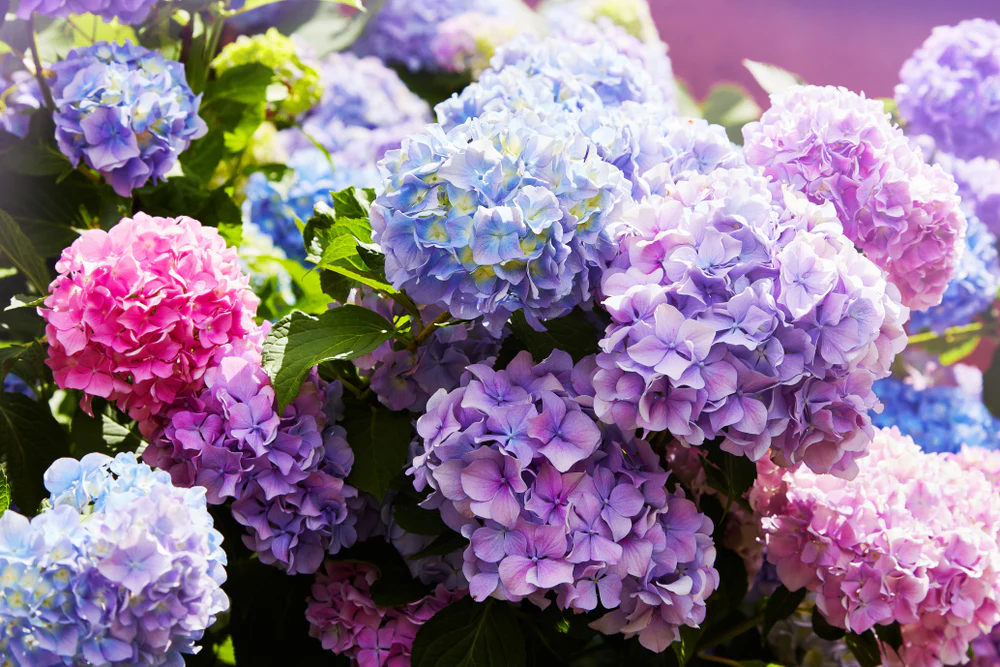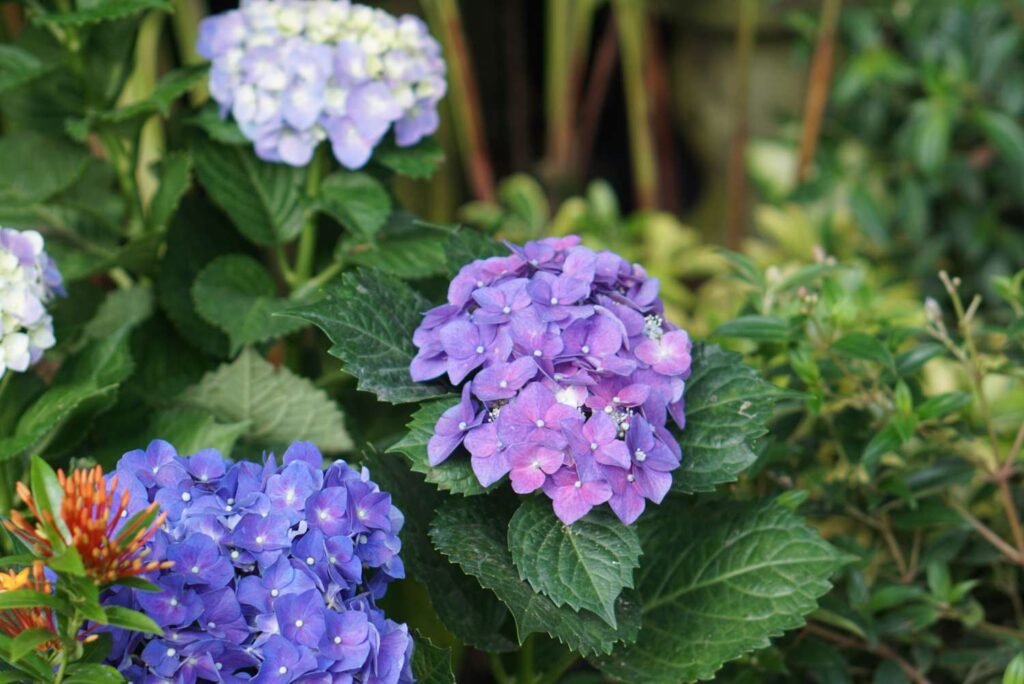Hydrangeas are among the most beloved flowering shrubs in the gardening world. With their lush foliage and magnificent clusters of blooms in shades of blue, pink, purple, and white, they bring timeless charm and elegance to any landscape. Known for their ability to thrive in diverse climates and soil conditions, hydrangeas are surprisingly easy to grow once you understand their needs.
Whether you’re an experienced gardener or a beginner hoping to add these stunning shrubs to your yard, this guide will walk you through everything you need to know about planting and caring for hydrangeas like a pro.
Why Choose Hydrangeas?

Hydrangeas are popular because they combine beauty, versatility, and resilience. Here are some reasons gardeners love them:
- Showy Blooms: Their large, globe-shaped or cone-shaped flowers last from late spring through summer.
- Variety of Colors: Many hydrangeas can change color based on soil pH, offering unique garden interest.
- Low Maintenance: Once established, they require minimal care compared to other flowering shrubs.
- Multiple Uses: Perfect as hedges, specimen plants, or container garden features.
- Long-Lived: With proper care, hydrangeas can thrive for decades.
Choosing the Right Hydrangea Variety

Not all hydrangeas are the same. Picking the right type for your garden ensures the best results.
1. Bigleaf Hydrangea (Hydrangea macrophylla)
- Known for: Iconic large mophead or lacecap flowers.
- Colors: Blue, pink, or purple depending on soil pH.
- Best for: Shady to partly sunny gardens.
2. Panicle Hydrangea (Hydrangea paniculata)
- Known for: Cone-shaped flower clusters.
- Colors: Creamy white, aging to pink.
- Best for: Full sun locations; very hardy.
3. Smooth Hydrangea (Hydrangea arborescens)
- Known for: Giant, white globe-like blooms (e.g., ‘Annabelle’).
- Best for: Cold climates; tolerates pruning well.
4. Oakleaf Hydrangea (Hydrangea quercifolia)
- Known for: Distinctive oak-shaped leaves and cone flowers.
- Bonus: Gorgeous fall foliage.
5. Climbing Hydrangea (Hydrangea anomala petiolaris)
- Known for: A vine variety that climbs trellises or walls.
- Best for: Vertical accents and shaded spots.
Ideal Growing Conditions for Hydrangeas

Hydrangeas adapt to many environments, but giving them the right conditions will ensure healthier plants and more abundant blooms.
- Light: Morning sun with afternoon shade is ideal. Panicle types tolerate more sun.
- Soil: Rich, well-draining soil with organic matter.
- Moisture: Hydrangeas need consistent watering, especially during dry periods.
- pH and Bloom Color:
- Acidic soil (pH < 6.0) produces blue flowers.
- Neutral to alkaline soil (pH 6.0–7.5) produces pink to red flowers.
- White hydrangeas generally don’t change color.
How to Plant Hydrangeas
Step 1: Choose the Right Location
Pick a spot with partial sun, good drainage, and protection from harsh winds.
Step 2: Prepare the Soil
- Test soil pH to decide if you need amendments.
- Mix in compost or aged manure for nutrient-rich soil.
Step 3: Dig the Hole
- Dig a hole twice as wide as the root ball but no deeper.
- Space plants according to variety: 3–10 feet apart.
Step 4: Planting
- Place the shrub so the crown is level with the soil surface.
- Backfill with soil, firm gently, and water deeply.
Step 5: Mulch
Apply a 2–3 inch mulch layer around the base to retain moisture and suppress weeds.
Caring for Hydrangeas Like a Pro

Watering
- Hydrangeas love water (their name comes from “hydor,” meaning water).
- Deeply water once or twice weekly.
- In hot summers, daily watering may be needed for young plants.
Fertilizing
- Apply a balanced fertilizer in spring and mid-summer.
- For color control:
- Add aluminum sulfate for blue flowers.
- Add lime for pink blooms.
Pruning
Hydrangea pruning depends on the type:
- Bigleaf & Oakleaf: Bloom on old wood—prune right after flowering.
- Panicle & Smooth: Bloom on new wood—prune in late winter or early spring.
- Remove dead, weak, or crossing stems to encourage airflow.
Winter Protection
- In colder regions, cover bigleaf hydrangeas with burlap or mulch in late fall.
- Panicle and smooth types are more cold-hardy.
Common Problems and Solutions

- Wilting Leaves: Usually from under-watering or too much afternoon sun. Water deeply and provide shade.
- Powdery Mildew: Improve air circulation and avoid overhead watering.
- Leaf Spots: Caused by fungal infections; remove affected leaves and use fungicide if needed.
- No Blooms: Often due to improper pruning, too much fertilizer, or lack of sunlight.
Propagating Hydrangeas
You can easily multiply your hydrangea collection:
- Stem Cuttings: Take softwood cuttings in summer and root them in moist soil.
- Layering: Bend a low branch to the ground, cover with soil, and wait for roots to develop before cutting.
- Division: Divide clumps of smooth hydrangeas in early spring.
Companion Plants for Hydrangeas
Hydrangeas look best when paired with other plants that complement their growth habits and bloom times:
- Hostas: Provide lush foliage contrast.
- Ferns: Add texture in shady borders.
- Azaleas & Rhododendrons: Bloom earlier, extending garden color.
- Boxwoods: Evergreen structure pairs beautifully with hydrangeas’ softness.
Seasonal Hydrangea Care Checklist
Spring:
- Fertilize and prune as needed.
- Add mulch and water regularly.
Summer:
- Deadhead spent blooms to extend flowering.
- Provide extra water in hot spells.
Fall:
- Stop fertilizing to allow plants to prepare for dormancy.
- Enjoy oakleaf hydrangea’s fall color.
Winter:
- Protect tender varieties with mulch or covers.
- Avoid heavy pruning during dormancy.
Styling Hydrangeas in Your Garden
Hydrangeas are versatile and can be used in various landscaping designs:
- As Hedges: Use panicle hydrangeas for a tall flowering hedge.
- Foundation Planting: Bigleaf hydrangeas soften the look of homes and walls.
- Containers: Dwarf varieties like ‘Cityline’ are perfect for patios.
- Cottage Gardens: Combine with roses, peonies, and lavender for a romantic feel.
Harvesting and Enjoying Hydrangea Blooms
Hydrangea flowers are not just for the garden—they’re wonderful indoors too.
- Cut Flowers: Snip stems in the morning, place in water immediately, and enjoy fresh bouquets.
- Drying Blooms: Let flowers partially dry on the plant before cutting for long-lasting arrangements.
- Crafting: Dried hydrangeas can be used in wreaths, centerpieces, or seasonal décor.
Conclusion
Growing hydrangeas may seem intimidating at first, but with the right knowledge, anyone can cultivate these breathtaking shrubs like a pro. By selecting the proper variety, planting in the right conditions, and following seasonal care routines, you’ll enjoy years of vibrant color and fragrance in your garden.
Hydrangeas reward you not only with show-stopping blooms but also with the satisfaction of tending a plant that symbolizes gratitude, abundance, and heartfelt emotion. So, whether you’re aiming to brighten up a shady corner, create a colorful hedge, or enjoy fresh bouquets indoors, hydrangeas are a perfect choice.
Take the time to plant them right, nurture them through the seasons, and soon your garden will boast the elegance and beauty that only hydrangeas can provide.
